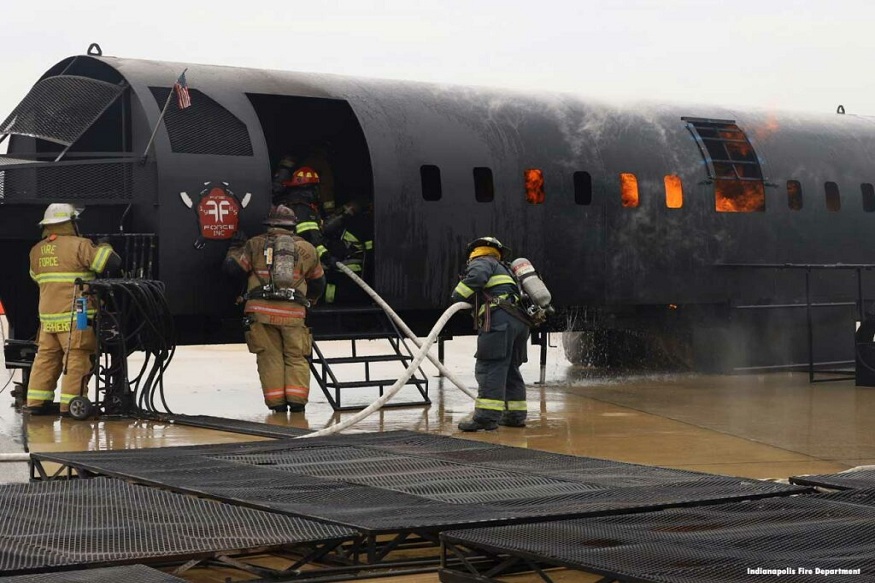Essential Aviation Hazmat Training for Safe Air Transport

In the aviation industry, safety and compliance are paramount. Among the most critical areas requiring specialized knowledge is the handling and transportation of hazardous materials. Whether it’s lithium batteries, flammable liquids, or toxic substances, transporting these items by air demands a deep understanding of international regulations, classification standards, labeling requirements, and emergency procedures. Aviation hazmat training is designed to equip professionals with the tools and judgment necessary to handle these responsibilities confidently and safely.
Transporting dangerous goods by air involves strict oversight, not only from national authorities but also from global organizations like the International Civil Aviation Organization (ICAO) and the International Air Transport Association (IATA). These regulations are constantly updated to reflect emerging threats, technological developments, and real-world incidents. Without ongoing training, aviation personnel run the risk of costly errors, regulatory violations, and most importantly, compromised safety.
Aviation hazmat training ensures that everyone involved in the transportation chain—from shippers and freight forwarders to ground handlers and flight crew—understands their specific responsibilities and how to execute them without error. It fosters a safety-first culture while protecting lives, aircraft, cargo, and reputation.
A Regulatory Requirement with Real-World Impact
Hazardous materials pose unique risks when transported by air. The confined environment of an aircraft, combined with variations in pressure, temperature, and humidity, can amplify the volatility of certain substances. Incidents in flight are not only dangerous but difficult to contain. That’s why aviation hazmat training is not optional—it’s a regulatory mandate enforced by agencies worldwide.
Personnel handling hazardous materials must be trained according to the guidelines of IATA’s Dangerous Goods Regulations (DGR) and ICAO’s Technical Instructions. These standards lay out detailed procedures for the identification, classification, packaging, documentation, and handling of dangerous goods. Training programs must be renewed at regular intervals and adapted to the specific functions of each employee.
But compliance isn’t the only reason to undergo aviation hazmat training. The training also builds situational awareness, enabling employees to recognize hazards before they escalate into emergencies. In a busy cargo terminal or during a fast-paced boarding process, spotting a misdeclared item or incorrect label could prevent an incident with serious consequences. Through case studies, real-world examples, and scenario-based exercises, trainees learn how to respond with speed and accuracy when something seems off.
Additionally, proper training protects organizations from legal liabilities and financial penalties. Fines for non-compliance can be steep, especially if violations result in accidents or delays. Airlines and freight operators must demonstrate that every person in the chain of custody has been properly trained and certified. Documentation and record-keeping are critical components of any hazmat management system, and training reinforces how to maintain them effectively.
Who Needs Aviation Hazmat Training?
Hazardous materials may not always look dangerous. Everyday items such as power banks, perfume, or cleaning products can become dangerous when improperly packed or loaded onto an aircraft. That’s why aviation hazmat training extends beyond obvious high-risk roles to include a wide array of personnel.
Shippers must know how to classify materials, select appropriate packaging, and complete documentation accurately. Freight forwarders and handlers are responsible for inspecting shipments, applying hazard labels, and verifying compliance. Pilots, flight attendants, and ground crew must be able to recognize hazmat labels and respond appropriately to mid-flight emergencies involving cargo or passenger items.
Even administrative staff may need awareness-level training if they’re involved in scheduling, documentation, or customer communication. The scope of aviation hazmat training depends on the employee’s role, but every touchpoint in the process contributes to safety and compliance.
Function-specific training is often delivered through modular programs that address the exact responsibilities of each participant. These modules may cover topics such as packaging requirements, labeling standards, placarding, security protocols, and emergency response. For example, a load planner may focus on segregation rules and weight limitations, while a gate agent may receive training on dangerous goods declarations and passenger baggage inspections.
Whether conducted in-person or online, aviation hazmat training is structured to ensure retention and real-world application. Assessments, recertification cycles, and refresher modules keep knowledge current, which is vital in a fast-changing regulatory environment.
Evolving Standards and the Role of Technology
As aviation operations become increasingly complex, the scope of aviation hazmat training is expanding. New classes of materials, such as biological specimens and advanced battery chemistries, require updated handling techniques and risk mitigation strategies. Global supply chain disruptions, security threats, and evolving passenger behavior all introduce new variables that affect how hazardous materials are managed.
Digital learning tools now play a larger role in delivering effective training. Online modules, virtual simulations, and compliance tracking software have become common in the industry, offering flexibility while maintaining rigor. These systems allow organizations to customize training paths, monitor certification status, and automate reminders for upcoming renewals. This level of organization reduces administrative burden and ensures that no one falls out of compliance unnoticed.
Technology also supports recordkeeping, which is essential during audits or incident investigations. Digital logs can track when training was completed, what modules were covered, and how each participant scored on assessments. This visibility protects the organization in the event of a regulatory inquiry or internal review.
In addition, aviation hazmat training now includes security awareness as a standard component. The possibility of deliberate misuse of dangerous goods calls for training that not only covers accidents but also sabotage, smuggling, and terrorism. By incorporating security topics into training, companies help build a workforce that’s alert, informed, and proactive in spotting suspicious behavior.
Building a Culture of Safety and Accountability
At its core, aviation hazmat training is about more than meeting a checklist. It’s about creating a culture where safety is everyone’s responsibility. When employees are empowered with knowledge and understand the reasoning behind regulations, they’re more likely to make careful, informed decisions.
Companies that prioritize high-quality hazmat training demonstrate a broader commitment to excellence. They reduce operational disruptions, minimize the risk of costly fines, and protect their brand. They also foster a working environment where people feel confident performing their roles because they’ve been properly prepared.
Ongoing investment in training shows respect for employees and the passengers or customers they serve. It acknowledges that safety starts with preparation, and preparation starts with knowledge. In an industry where the margin for error is slim, that preparation makes all the difference.
Aviation hazmat training ensures that no one is left guessing in a high-stakes situation. Whether it’s loading a package, identifying a label, or reacting to an inflight emergency, the decisions made in those moments can protect lives, preserve aircraft integrity, and uphold the safety reputation that the aviation industry works so hard to maintain.




